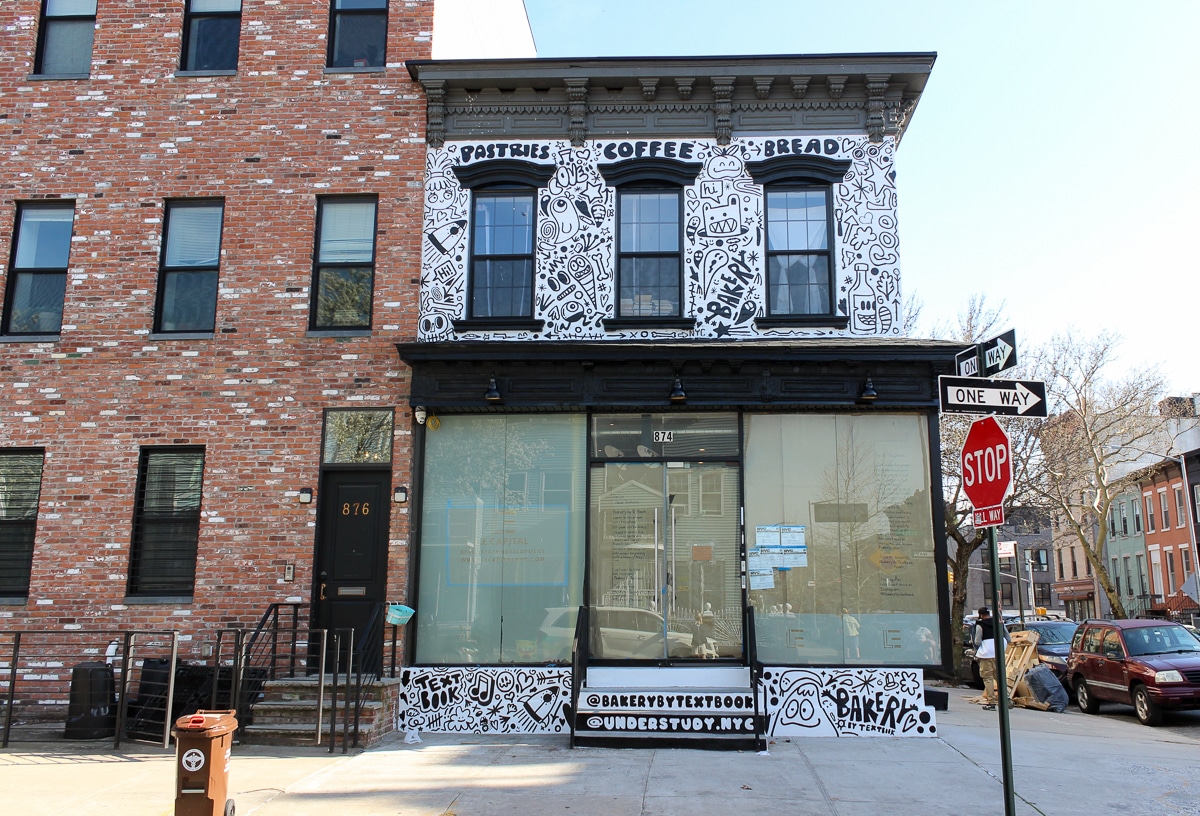Walkabout: An Incident on the Road From Bergen Island
On a bright early summer day in June of 1893, Dr. and Mrs. Samuel Santoire, of 148 Clinton Street in Brooklyn Heights, went for a buggy ride on a Sunday morning. Their horse was a handsome bay, pulling an open roofed touring buggy, expertly handled by the good doctor. Their destination was Bergen Island, in…

On a bright early summer day in June of 1893, Dr. and Mrs. Samuel Santoire, of 148 Clinton Street in Brooklyn Heights, went for a buggy ride on a Sunday morning. Their horse was a handsome bay, pulling an open roofed touring buggy, expertly handled by the good doctor. Their destination was Bergen Island, in the Flatlands. The journey was a long one, all the way south through Flatbush and on down to Flatlands and Canarsie. But the day was beautiful and the company pleasant, so by the time the couple reached the water, their day still stretched before them.
Bergen Island had been settled by the Dutch way back in the early 1600s. It was a real island, just off the coast of Canarsie, and had been a favorite place for the Canarsee Indians to hunt, harvest marsh grasses and shellfish. When the Dutch took over, the island was called Mentelaer’s Island, and had a Dutch West India Company trading post on it. It then became the property of one Hans Hansen Bergen who proceeded to farm the marshy island. His descendants would become quite important in Brooklyn’s history in the centuries that followed.
The island was just off the mainland, in Flatlands, a part of Brooklyn that remained rural well into the 20th century. But as Brooklyn developed into a crowded urban metropolis, people began heading towards the ocean looking for cooling breezes and fresh air in the summer. By the last quarter of the 19th century, Coney Island had been “discovered,” and was turning into a vacation spot for the well-to-do, with large hotels and beach resorts being built long before the amusement parks.
Bergen Island had also been “discovered,” as well, and a few years after this story took place, would be developed as a day tripper’s paradise, but that’s a later story. The island was still a destination for those who wanted to get away from the city and enjoy nature in a part of Brooklyn that was still relatively untouched by man. It was swampy out there, in parts, but beautiful, and still looked much like it did when the Canarsee lived there, and for a couple that wanted to get away, it was perfect.
An article in the Brooklyn Eagle described the scene in 1888: “The ride from Flatbush to Flatlands was a very pleasant one, and, after passing through the village, we followed a narrow farmer’s road to the meadows, then across a bridge and we were on Bergen Island. The road, after crossing the bridge, led into a thick forest. It looked as if it had been undisturbed for centuries. The trees completely shaded the road, so that we seemed to be riding through a leafy bower. After traveling thus for half a mile we came into open country again and to an old fashioned Dutch farmhouse, which must have stood on its present site for many years. A half mile beyond could be seen the blue waters of Jamaica Bay, sparkling in the sunshine.”
The Santoire’s reached Flatlands, and the island and had a wonderful day. Around five o’clock, they were headed back across a narrow road that led through the salt marshes to the bridge. It was high tide, and the road was too narrow for two vehicles to pass at the same time. On both sides of the road, the water was rising in the marsh, and it was well known that dangerous quicksand lay beneath the surface water, which was now about two feet deep. As the doctor made his way across, another carriage was headed their way, and he had no choice but to turn his horse and carriage into the swamp to let them pass.
As he tried to get back on the road, the horse began floundering, and was soon mired in the thick sticky mud. As the couple watched in horror, the horse began to sink, and was soon up to his shoulders in mud. The carriage was faring a little better, with more surface to hold it up, but it too, was sinking as well. There was no one around, and the other carriage which had caused them to go off the road, was long gone.
Blanche Santoire began screaming. “Help, help, can anyone help us?” As she continued to cry out, the horse continued to slowly sink. He had stopped flailing and stood in the mud, panic in his eyes, snorting loudly in his terror. After what seemed like hours, the couple heard another carriage or wagon coming along the road.
It was a stagecoach, pulled by two horses; one of the coaches that regularly travelled this road, bringing tourists back and forth from the island. At the reins was John Perpaw, a black coachman. When he saw the Santoire’s and the dangerous predicament they were in, he didn’t hesitate, and jumped from the seat of the coach to help. Mrs. Santoire was just about to jump from her buggy into the water, but Perpaw told her to wait. He tore off his shoes and rolled up his trousers, and waded out into the muddy water.
He reached the coach and Mrs. Santoire. She climbed out of the coach into his arms and he carried her back to the road. He went back and offered to carry Dr. Santoire as well, but the doctor told Perpaw that he was lame, and had trouble moving his leg, and if possible, would stay with the coach. The stage driver agreed, calmed the trembling horse, and looked for a way to get horse and buggy out of the quicksand.
He unharnessed the Santoire’s horse, and using his own two horses, hooked them to the buggy and dragged it and Dr. Santoire out of the swamp. He then took the wide board of his coachman’s seat, and yanked it out of the coach. He placed it by the horse’s hind legs so that the horse would have a solid footing after they freed it from the sucking mud. He then hooked his horses to the Santoire horse’s rigging, and slowly pulled the horse far enough out of the quicksand that it could get its hind legs on the board. From then, it was only a matter of time to pull the horse the rest of the way out of the swamp.
It took over an hour to get the horse out of the quicksand, and a couple of hours for the entire operation. At the end, the horse, the carriage and Mr. Perpaw were covered in cold sticky black mud and sand. The papers don’t say what happened next between Dr. and Mrs. Santoire and John Perpaw, but I like to think they were suitably grateful for him saving their lives and the life of their horse, not to mention their carriage. They either made their way home, or had to stay in Flatlands or Carnarsie while repairs and cleanup were made to man and beast alike. They must have told the newspapers of the story, as there were no other witnesses.
As for the papers, the story was carried in both the New York Herald and the New York Tribune. It was not picked up by any of the Brooklyn papers, which is surprising, considering the doctor was a prominent Brooklyn Heights physician whose family’s comings and goings were noted in the Eagle’s society pages. It was a great human interest story. But perhaps it was the fact that the rescuer in this story was a black man that the story didn’t get more local attention. Even the Herald, which ran a much more complete story, took the typical attitude of the day.
Mr. Pewpaw was the hero of the story, they couldn’t take that from him, but they did refer to him as “the negro” throughout, which was pretty typical of newspaper writing about black folks then. “Mrs. Santoire climbed over the back of the buggy and threw her arms about the neck of the negro, who brought her safe to land.” Also, “the buggy was covered in mud and sand and so was the negro.” *Sigh*. It would take a long time before that sort of writing became unacceptable. One could easily argue that it has never really gone away in certain kinds of newspaper stories, only the use of the word “negro” has changed.
Anyway, a bit of research tells us that Dr. Santoire had been seriously injured in 1890, when he was run over by a runaway horse and carriage. That was probably why he was lame and couldn’t hop out of the buggy. In 1897, he was up for a position as a consul in an unnamed town in France. He didn’t know if he was going to get it, but told reporters that he was also interested in becoming commissioner of immigration at Ellis Island. His family could trace their lineage back to French nobility from the 16th century, and had produced doctors and medical men for generations. That didn’t save their younger son, who died at the age of 20, in 1897, while still a student at Yale. Blanche Santoire died at home in 1918, and the doctor died in 1923, the same year the couple’s other son, also a doctor, also died.
So what happened to John Pewpaw, who risked his own safety to wade into quicksand for strangers? The Herald tells us that after the rescue, he went back to his employer, covered, no doubt in mud and dirt. He told his boss what had happened, and his boss, instead of congratulating him for a good deed well done, castigating him for taking his work time to mind someone else’s business. “He should not have neglected his business for anyone,” the paper reported. Goes to show you, sometimes no good deed goes unpunished. I hope John Pewpaw had a long and happy life. Of course, being a “negro,” his life and death would go unreported.
Bergen Island became Bergen Beach. Like many beach communities, it was developed for sand, sun and fun. No one even remembers those days. We’ll take a look at the amusement park called Bergen Beach, next time.
(Long Island Wetlands. Photo:Stonybrook.edu)









What's Your Take? Leave a Comment